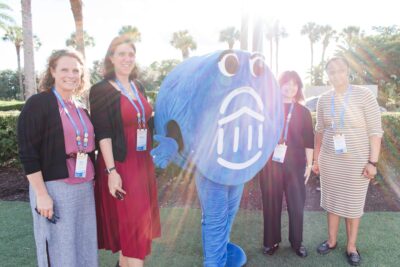6 ways leaders are rethinking their student affairs organizational charts in 2023
Between a pandemic, a national racial reckoning, and increasing challenges to the higher education business model, student affairs leaders have spent the past few years looking for ways to innovate and collaborate more effectively across the cabinet. One avenue leaders have explored to do so is changing their org chart: moving units, combining units, or setting up dual reporting lines. EAB surveyed more than 60 student affairs leaders and analyzed 100 institutions’ student affairs organizational charts to learn how the student affairs reporting structure is changing to reflect today’s needs.
We analyzed org charts from a variety of institutions—large and small, public and private, historically Black colleges and universities, and Hispanic-serving institutions. Although the data made it clear that no two student affairs organizational charts are exactly the same, there were some striking similarities across most organizational structures. Large or small, public or private, almost all VPSAs manage between six and seven direct reports, almost always including the director of career services.
Based on our survey and org chart analysis, we also identified six recent trends that suggest VPSAs are increasingly changing their organization to break down institutional siloes.
1. Most student affairs divisions now own career services
After years of industry-wide debate about who should ‘own’ career services, our organizational chart review revealed that about 90% of institutions today have career services reporting to VPSAs. Ten percent of surveyed institutions have also moved academic advising under the oversight of the VPSA in the last 18 months. When EAB researched how to integrate academic and career development, we found that integration or collaboration between academic advising and career services aids students in connecting their coursework to their career endeavors.
-
90%
of institutions today have career services reporting to VPSAs
2. Athletics departments report to student affairs at one-half of institutions
In roughly 50% of the org charts we analyzed, athletics and campus recreation departments reported to student affairs, not directly to the president of the institution. Given the concern for student athletes’ health and psychological well-being, we know that it is critical that these students know how to access mental health services. The National College Athletics Association (NCAA) survey discovered that less than half of all student athletes feel comfortable seeking mental health support. Breaking down the silo between athletics and mental health by moving athletics under student affairs might be one way to aid student well-being.
-
50%
of org charts analyzed found athletics and campus recreation departments reporting to student affairs, rather than directly to the president of the institution
3. Campus safety: The newest student affairs unit?
While only 10% of campus safety units report to student affairs according to our org chart analysis, a handful of student affairs leaders we surveyed told us they gained campus safety in the last 18 months. Campus safety reporting to student affairs could allow student activists and campus police to communicate and collaborate more effectively. This org design trend may be a response to recent political events and a sense of mistrust of campus safety officers among students. We’ll be keeping a close eye on this trend to learn whether student affairs can help transform campus policing to advance their DEIJ efforts.
4. Student affairs providing greater support for multicultural centers
In our survey, we asked student affairs leaders about the most notable org chart innovation they made in the past 18 months. We heard from one leader that their institution reallocated funding to the multicultural center—a decision they likely made with the goal of increasing a sense of belonging for students from historically excluded groups. EAB has done extensive research on reshaping student success strategies from a DEIJ lens, and as more institutions strive to embody the hallmarks of anti-racist institutions, this is just one example of how VPSAs are more frequently making org chart innovations around DEIJ.
5. Coordinated response to the pandemic
Although we identified several common practices, some of the organizational design innovations we heard about were unique. For example, one student affairs division recently added a pandemic response unit. Even beyond the current COVID-19 pandemic, pandemic response units allow the institution to be proactive in responding to future viral threats and keep the student body well-informed.
This is just one of the many ways we’ve seen universities use their org chart as a tool for pandemic preparedness. For example, several universities, including the University of Michigan, Bowling Green State University, and Buena Vista University, added a chief health officer position to help coordinate their pandemic response.
6. Most divisions are changing nothing at all
Despite the many changes universities have faced in the past two to three years, the majority of student affairs units remain relatively stable. According to our survey results, over 50% of institutions have not gained any units in the last 18 months, and over 60% have not lost any units in this same timeframe. This might be a sign that student affairs leaders are intentionally seeking stability in these times of fluctuation. Sometimes, org chart changes can even hinder agility because of the learning curve as leaders transition into their new roles.
Majority of student affairs units remain relatively stable
-
50%
of institutions have not gained any student affairs units in the last 18 months
-
60%
of institutions have not lost any student affairs units in the last 18 months
Given the shared mission of student affairs divisions across the higher education industry, these changes are likely made with the goal of improving student outcomes and the quality of students’ lives. At EAB, we’ll be keeping a close eye on the outcomes of these recent trends to better understand their impacts.
Trying to decide on the right advising model, or whether your institution needs a chief student success officer? Watch our webinar on leading your student success enterprise.
More Blogs

Four signs it’s time to break up with your student CRM

Three lessons from 1,200 student success leaders on higher ed’s future
